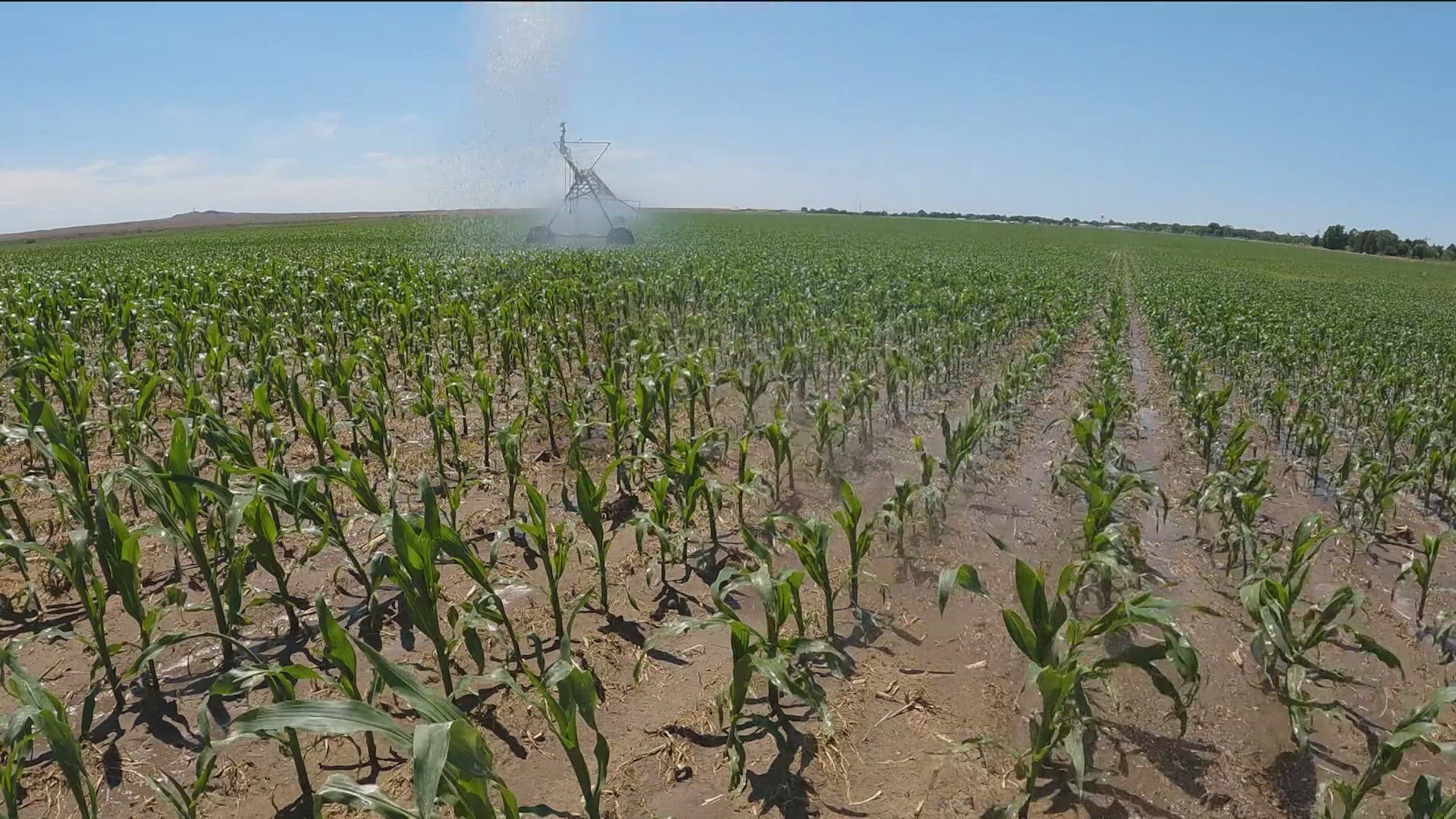BOISE, Idaho — The director of the Idaho Department of Water Resources (IDWR) issued an order on May 30 to curtail, or shut off, groundwater rights that are junior, or more recent, to March 31, 1954 in certain groundwater districts.
This is because identified districts, 4 of them at first, now down to 2, are failing to comply with approved mitigation plans to address the status of 74,100 acre-feet of water to senior surface water users, according to state officials.
This comes down to ground water and surface water. There is a longstanding conflict between surface water users, who tend to have more senior water rights, and groundwater users with more junior rights.
The major conflict now is over rights to the Eastern Snake Plain Aquifer.
The groundwater users positioned to have their water cut off say they are in dire straits, the timing of the state ruling compromises their agriculture operations. In Idaho a major key: there are laws protecting the senior rights of surface water users.
Idaho follows the prior appropriation doctrine of "first in time, first in right" for water rights. Senior priority water rights get their water fulfilled first, that is followed by junior water rights. If there is not enough water to fill all water rights, junior users can potentially be curtailed.
The problem? The Eastern Snake Plain Aquifer has been declining since the 1950s as groundwater pumping increased for irrigation. This has reduced aquifer levels and spring flows that feed surface water sources.
The issues between surface and ground water users created the development of a methodology to determine material injury, or impact, to senior water users. The methodology has been implemented for many years to evaluate water supply and crop need conditions to determine the magnitude of impact to senior surface water users.
An agreement was finalized in 2016 between surface water and ground water groups. It required groundwater reductions of 240,000 acre-feet per year, or 13% across the region, by groundwater districts.
But now, Some groundwater districts are looking to follow an older 2009 mitigation plan involving delivery of storage water to the surface water coalition instead.
There is a dispute over how it is all calculated.
This year, the Director of IDWR calculated there would be a shortage to the Twin Falls Canal Co. senior surface water users of 74,100 acre-feet of water.
IDWR notified junior ground water users back on May 10 that they would need to show how they will mitigate for the water shortfall.
Non-compliant groundwater users were given 15 days from May 30th to join a compliant district to avoid curtailment, some say that isn't possible at this point. Others said, it is simply the rules.
Again, "first in time, first in right" is the law of the land in the Gem State.
Join 'The 208' conversation:
- Text us at (208) 321-5614
- E-mail us at the208@ktvb.com
- Join our The 208 Facebook group: https://www.facebook.com/groups/the208KTVB/
- Follow us on Twitter: @the208KTVB or tweet #the208 and #SoIdaho
- Follow us on Instagram: @the208KTVB
- Bookmark our landing page: /the-208
- Still reading this list? We're on YouTube, too:

